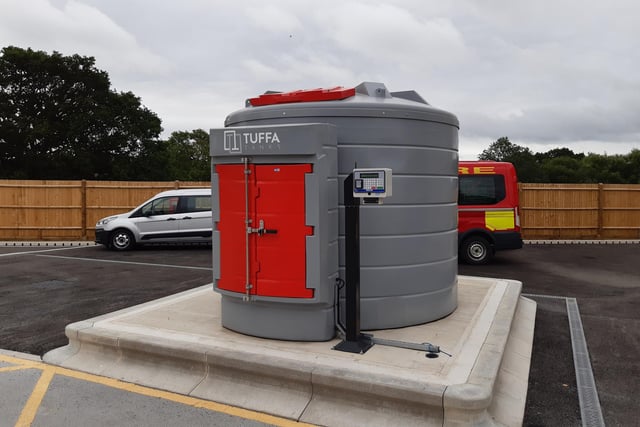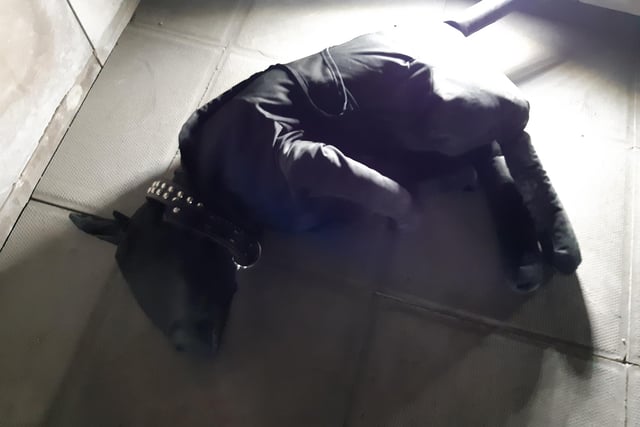The multi-million-pound site, which was commissioned by West Sussex County Council, opened on Monday, July 10, and is the first of its type in the county.
Platinum House replaces the previous fire station in Hurst Road, which was built in 1968.
WSCC leader Paul Marshall called the site ‘an absolutely major step for West Sussex County Council’.
He told the County Times: “We talk about protecting our communities but in order to do that we need to protect those people who are out there exposing themselves to danger, particularly our fire service personnel. They get the best experience and training for events that they have to attend.”
Chief fire officer Sabrina Cohen-Hatton said Platinum House marked the start of a new era for the fire service, saying it has ‘completely modernised’ the way firefighters are trained.
She said: “Our firefighters go into some conditions that are incredibly challenging and it’s incumbent on us as a service to be able to give them the best experience we possibly can. The realism that we are able to generate here at these facilities is absolutely unparalleled.”
She said facilities had been built with a focus on health, safety and wellbeing too.
Group manager Jim Mackay took the County Times on a tour, starting in the drill yard and road traffic collision training area. He explained that training begins slowly, teaching new firefighters techniques like the ‘peel and reveal’ where they peel away the plastic interior of a car to expose things that cannot be cut through. He added: “We’ve got a trench so you can push a car into it and simulate a car in a ditch.”
The tour also took in the multi-function training tower, which can simulate scenarios where people must be rescued from towers, lift shafts and building sites. It is also used to train firefighters in first aid and extricating casualties.
Jim said real incidents have informed their training and showed one room with a fake chimney to prepare firefighters for the more traditional homes in West Sussex.
“The initial training is at a much slower pace,” he said, adding that they can fill the tower with cold smoke first to get new firefighters used to wearing breathing apparatus. Then they can put them inside with the lights off before adding hose reels, radios and thermal imaging cameras.
Firefighters can try tackling live fires in a different building too, where trainers can run around 47 different scenarios. Rooms in this building contain tables and electrical appliances so firefighters can learn how to work under many circumstances. The fire gasses here are all extracted and reburned safely so smoke is emitted into the environment as clean air.
Jim said: “One of the strongest changes in our culture and the way we go about our work is around contaminants.”
He said that there is now a strict separation between ‘clean’ and ‘dirty’ areas of the training centre with special washing machines to wash the fire fighting kit on site.
Sabrina said: “The chemicals that are given off by fires by burning substances and the things that our crews will encounter operationally are not great for the body so we’ve done everything we can here to reduce people’s exposure to contaminants.”
Construction at the site began in November 2021, and the training centre has been designed to support the county council’s aims to become carbon neutral by 2030. Features include solar panels, electric vehicle charging points and air source heat pumps.
In February 2022, the fire service decided to name the road MacFarlane Way in honour of Station Manager John Macfarlane who passed away in 2013. The topping out ceremony was held in September 2022 and in October 2022 the site was named Platinum House in honour of Queen Elizabeth II.

1. Platinum House
Platinum House, West Sussex Fire & Rescue Service's new state-of-the-art training centre and fire station, is now operational Photo: Lawrence Smith

2. Platinum House
Platinum House, West Sussex Fire & Rescue Service's new state-of-the-art training centre and fire station, is now operational Photo: Lawrence Smith

3. Platinum House
Photo: Lawrence Smith

4. Platinum House
Photo: Lawrence Smith